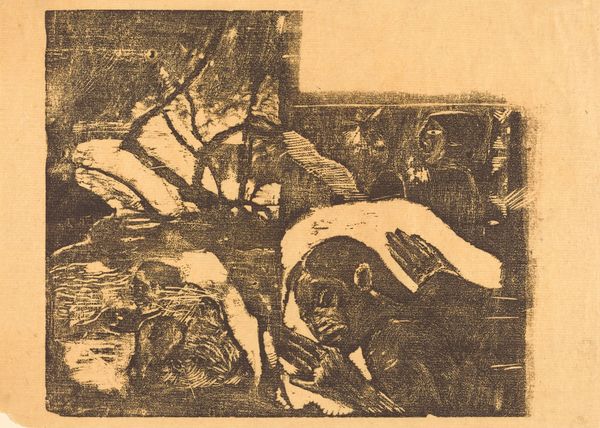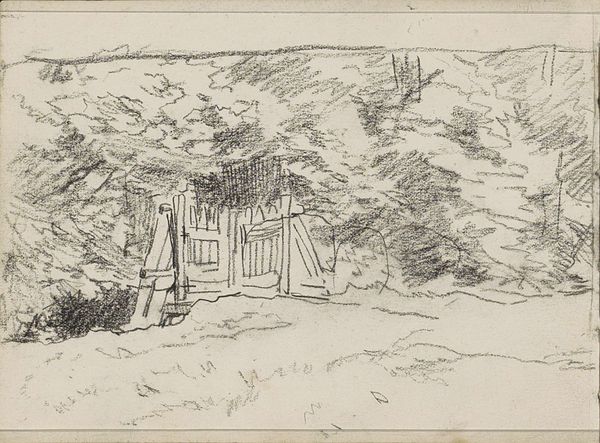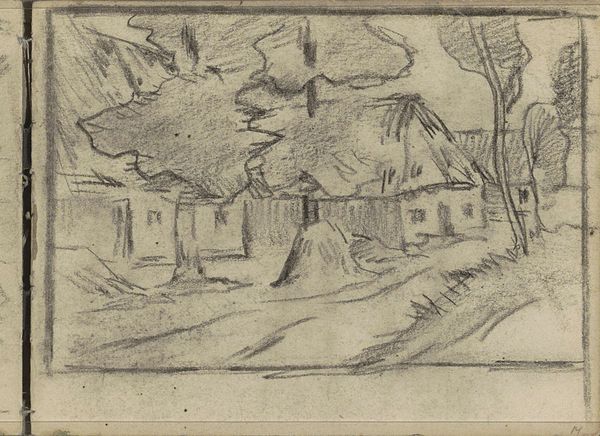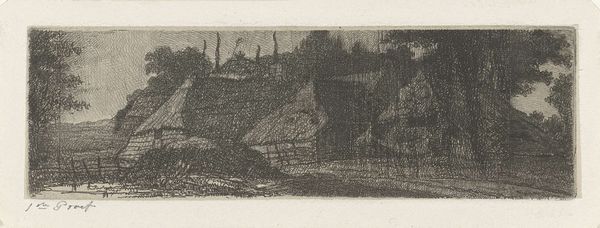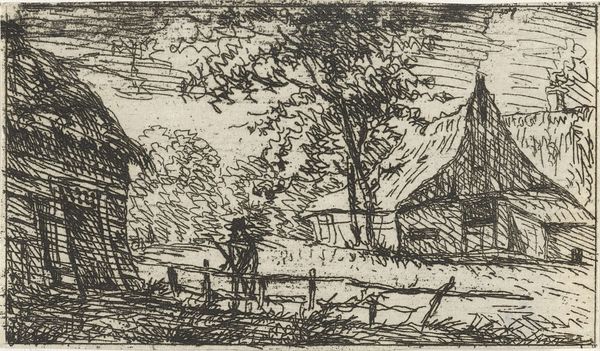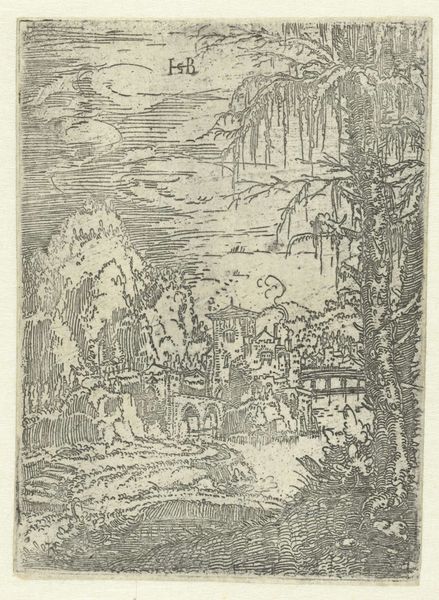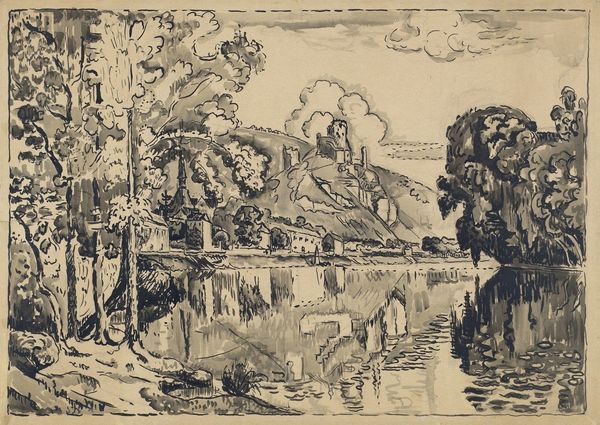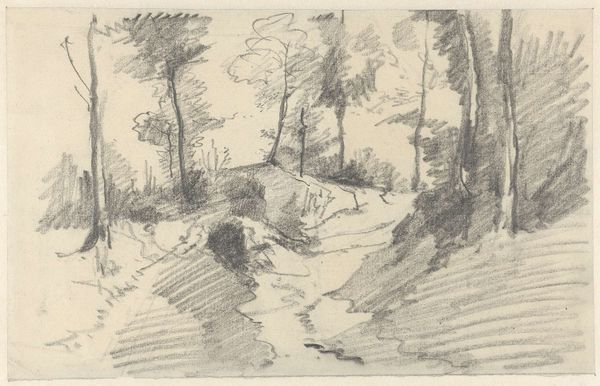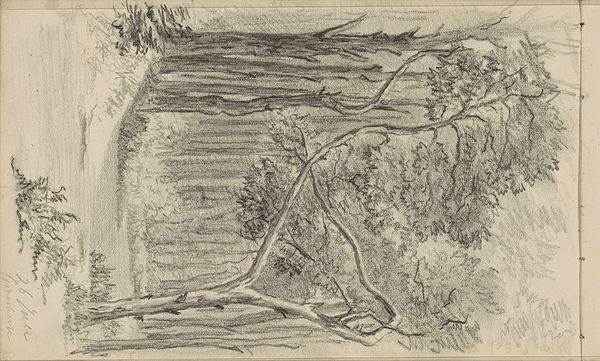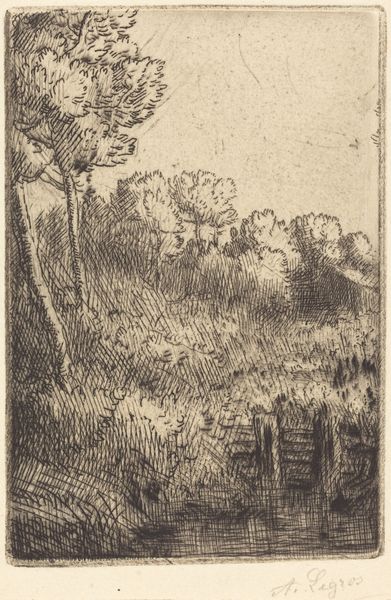
print, woodcut
#
pen drawing
# print
#
pen sketch
#
landscape
#
german-expressionism
#
figuration
#
expressionism
#
woodcut
#
line
#
sketchbook drawing
Copyright: Public domain
Editor: This is Otto Mueller's "Bahnhof Schmiedeberg (riesengebirge)," a woodcut from 1925. It depicts a train station nestled in what looks like a somewhat overgrown landscape. The strong contrast gives it an almost ominous feeling, despite the seemingly mundane subject. How do you interpret this work within its historical context? Curator: The unease you pick up on is significant. Remember that German Expressionism, even in its landscape depictions, rarely shies away from reflecting anxieties of the era. This piece was created after World War I, in the Weimar Republic, a period of great social and economic instability in Germany. A seemingly simple train station can then be viewed as a poignant reflection on a disrupted society and landscape. How does the choice of a woodcut, a somewhat crude medium, play into this reading, in your opinion? Editor: Well, the roughness kind of amplifies that sense of unease, right? The lack of polish seems to mirror a world falling apart or a rejection of pre-war values and aesthetics. Curator: Precisely. The intentional primitivism evident in the woodcut's stark lines and unrefined texture becomes a powerful statement. Mueller, and the Expressionist movement more broadly, saw art as a means to engage critically with the political landscape, social alienation, and psychological distress. Consider how this imagery would have been received by a public still reeling from war and grappling with profound societal changes. Editor: So, the artwork's cultural role was to act almost as a mirror reflecting back a somewhat uncomfortable image of society. Curator: Absolutely. And beyond reflecting, to instigate a conversation. This piece uses the everyday - a train station - to provoke deep reflections on a society undergoing significant transformation and, indeed, trauma. It reminds us that even quiet scenes can carry profound historical weight. Editor: It’s amazing how a seemingly simple image can be so charged. Thanks for offering such great insights! Curator: My pleasure. It is rewarding to reconsider the artwork, understanding what art means for a public space.
Comments
No comments
Be the first to comment and join the conversation on the ultimate creative platform.

